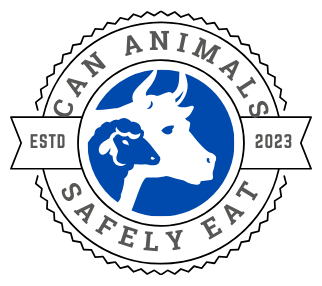Can Dogs Safely Eat Pork
Yes, dogs can indeed enjoy pork as part of their diet, It is a valuable source of protein, a fundamental part of a dog’s diet. Proteins are essential for muscle development, cellular repair, and overall growth. Pork is also rich in various vitamins and minerals, including B vitamins like B12 and B6, zinc, phosphorus, and selenium.
Safety When Feeding Pork to Dogs
While pork should not replace a well-balanced dog food diet, it can complement it, providing an additional protein source that adds variety to your dog’s meals.
It’s crucial to note that the choice of pork cuts matters – lean cuts such as pork loin or tenderloin are preferable to fatty cuts, as excessive fat intake can lead to digestive issues and obesity in dogs.
The primary concern when it comes to feeding pork to dogs is the potential risk of bacterial contamination, particularly with parasites like Trichinella spiralis.
To avoid this risk, thorough cooking of pork is essential. Ensure that the meat reaches an internal temperature of at least 145°F (63°C) to eliminate any potential pathogens effectively.
Equally important is to avoid seasoning the pork. While humans may enjoy flavorful spices, herbs, and additives, many of these can be harmful to dogs.
Onions and garlic, for example, are very toxic for dogs and should be strictly avoided in any seasoned or flavored pork preparations.
Best Practices for Offering Pork to Your Canine Friend
Introducing pork into your dog’s diet should be accompanied by best practices to ensure safety and maximize nutritional benefits.
Lean Cuts: Prioritize lean cuts of pork to minimize fat content. Lean pork options, such as pork loin or tenderloin, provide protein benefits without the potential drawbacks of excessive fat intake.
Thorough Cooking: Cooking pork thoroughly is a must. Avoid rare or undercooked pork, as this can increase the risk of parasites or harmful bacteria surviving, posing a potential threat to your dog’s health.
No Seasonings: Keep it simple – refrain from adding any spices, herbs, or seasonings to the pork. Dogs don’t need the additional flavors, and many seasonings commonly used in human dishes can be harmful to them.
Moderation: As with any treat or addition to your dog’s diet, moderation is key. Pork should be part of a varied and balanced diet, not the sole focus. Treat it as an occasional addition rather than a primary protein source.
Pork Variety and Dietary Sensitivities
While pork is generally well-tolerated by many dogs, it’s important to recognize that individual dogs may have sensitivities or allergies.
Signs of an adverse reaction can range from gastrointestinal upset, such as vomiting or diarrhea, to changes in behavior.
If you observe any of these signs after introducing pork into your dog’s diet, it’s essential to consult with your veterinarian. They can assess the situation, determine if it’s an allergic reaction, and guide the best course of action.
Alternatives to pork and better options in my opinion include cooked chicken, turkey, or beef.
Pork can provide an array of possibilities in your dog’s diet, offering diversity and nutritional benefits. Beyond the lean cuts, pork organs can also be considered.
Organs like the liver can be a nutrient-dense addition, offering essential vitamins and minerals in concentrated form. However, moderation is crucial, as excessive organ consumption can lead to an imbalance of certain nutrients.
So, the answer to whether dogs can safely eat pork is a yes, as long as certain guidelines are followed. From its protein-rich composition to the necessity of thorough cooking, providing pork to your dog can be beneficial.
By only using lean cuts, ensuring proper cooking, avoiding seasonings, and giving pork in moderation, you can offer your dog a flavorful and nutritious treat.
As always, consulting with your veterinarian before making significant changes to your dog’s diet is a must, ensuring choices are aligned with your dog’s unique health profile.







